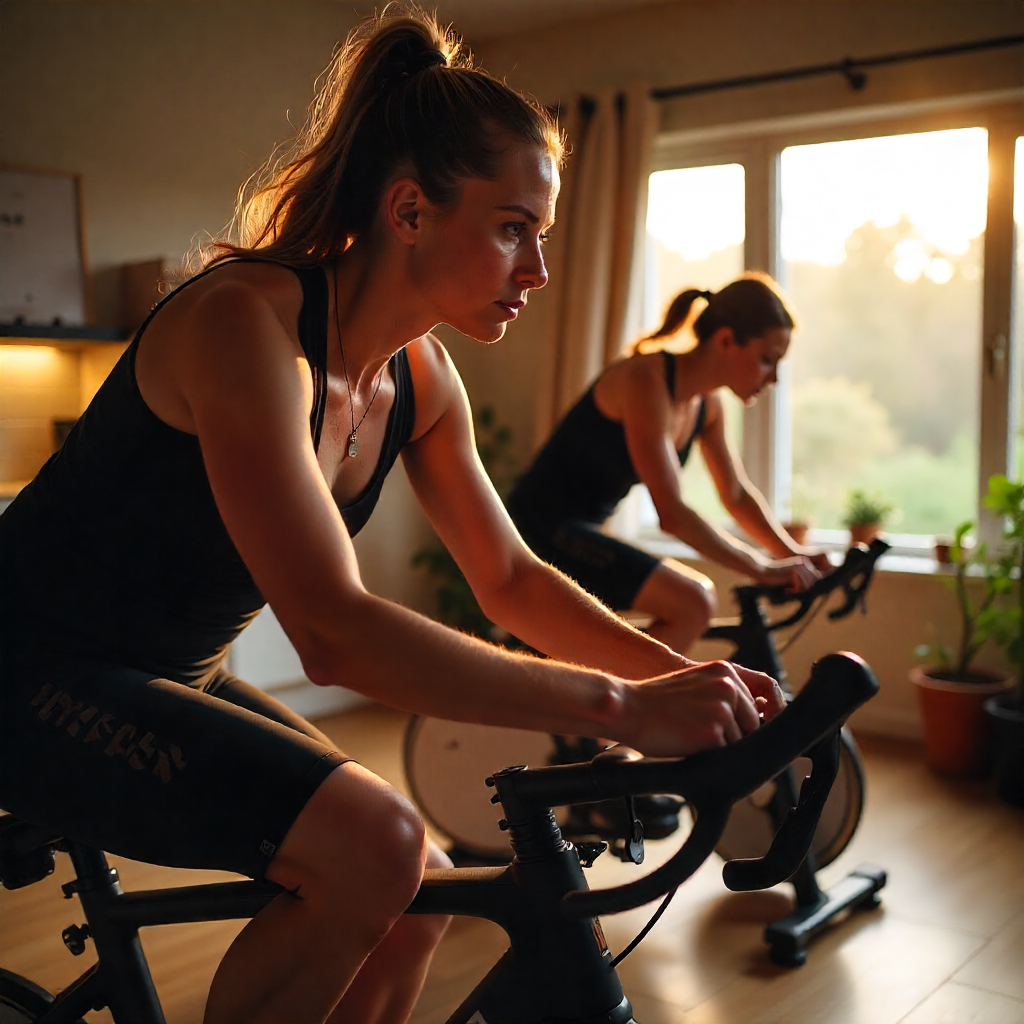The Best Fluffy Pancakes recipe you will fall in love with. Full of tips and tricks to help you make the best pancakes.
When Injuries Meet Indoor Cycling: Your Path Forward
Recovering from an injury doesn’t mean giving up your indoor cycling goals. With smart adjustments to your bike fit, training intensity, and session length, you can keep riding safely and rebuild strength without setbacks. This guide shares practical, no-fluff recovery strategies that keep pain away and progress on track — from avoiding standing climbs to tracking post-ride pain. Ride smarter, not harder.

Sarah stared at her stationary bike gathering dust in the corner, her knee brace a constant reminder of last year’s running injury. The doctor had cleared her for “low-impact exercise,” but the fear lingered – what if indoor cycling made things worse? What if that old shoulder injury flared up during climbs? She wasn’t alone in this mental battle. Thousands of fitness enthusiasts face the same dilemma every day, caught between their desire to stay active and the very real concern about aggravating existing injuries. Maybe you’re dealing with a cranky lower back, a temperamental knee, or shoulders that protest certain movements. The good news? Indoor cycling can actually be your comeback story, not your setback – when approached with the right knowledge and modifications.
Living with a pre-existing injury doesn’t mean your fitness journey ends; it just means you need a smarter approach. Indoor cycling offers incredible adaptability for riders managing various physical limitations, from joint issues to muscle imbalances. In this comprehensive guide, we’ll explore how to safely navigate indoor cycling injuries, covering everything from bike setup modifications to workout adaptations. Whether you’re dealing with knee problems, back pain, or shoulder limitations, you’ll discover practical strategies to keep pedaling toward your fitness goals while protecting your body’s vulnerable areas.
Adjust Your Indoor Bike Fit to Avoid Pain
If your knees ache or your back feels tight after riding, your bike setup might be the sneaky culprit. Indoor cycling injury prevention starts with proper positioning—it’s like tuning a guitar before playing.
• Check your saddle height: Too low? Your knees will protest. Too high? Your hips might rock awkwardly.
• Adjust handlebar reach: Long reach equals shoulder and neck strain. Aim for relaxed arms.
• Align your cleats: Misalignment messes with knees and ankles.
Don’t guess—use an apps or get a professional fit if possible. A few small tweaks can make indoor cycling feel like a breeze instead of a battle. Ride smarter, not harder, and your joints will thank you every time.
Stick to Lower Heart Rate Zones for Healing
Not every ride needs to feel like a race. If you’re dealing with discomfort, slow things down and ride in Zone 1–2.
• These zones mean easy to moderate effort—you can chat without gasping for air.
• Low-intensity rides help boost circulation and reduce inflammation, making recovery part of your training.
• Ideal for riders managing knee pain, back strain, or hip tightness.
Think of it as giving your body a gentle massage instead of a smackdown. Indoor cycling recovery starts with patience. Ride light, move freely, and stay consistent—progress comes from listening, not just grinding.
Skip Standing Climbs to Protect Your Joints
Standing sprints and climbs may feel heroic, but they can punish your body if you’re nursing an injury. Let’s keep it seated and smart.
• Standing adds load to knees, hips, and lower back—skip it during recovery.
• Stay seated with light to moderate resistance and aim for a smooth cadence.
• Want intensity? Try high-cadence drills or light tempo efforts instead.
Your body’s already working hard to heal. Piling on pressure isn’t the answer. Indoor cycling injuries doesn’t have to be extremely worried about . Respect your limits, protect your progress, and you’ll be stronger next ride—without the wincing.
Keep Indoor Cycling Sessions Short to Prevent Setbacks
When bouncing back from an injury, less really is more—your first indoor cycling sessions should feel easy, not epic.
• Start with 20–30 minute rides, even if you feel strong.
• Gradually increase ride time by 5–10 minutes per week, depending on how your body responds.
• Use a post-ride pain scale (0–10): if pain jumps past 4, it’s time to adjust.
This isn’t about pushing limits—it’s about rebuilding trust with your body. Indoor cycling recovery is a marathon, not a sprint. Small steps lead to strong comebacks, and short sessions give your joints time to adapt without overload.
Listen to Your Body and Talk to Your Doctor
You know your body best—but when recovering, your healthcare provider is your ride buddy with the map.
• Always get clearance before restarting indoor cycling, especially after surgeries, fractures, or herniated discs.
• Ask about movement limits or safe heart rate zones specific to your injury.
• Pay attention to warning signs: sharp pain, swelling, or worsening soreness after your ride? Hit pause and reassess.
Healing isn’t linear, and forcing it can do more harm than good. Respect your signals, ride with caution, and partner with your provider—because smart training includes smart recovery too.
Summary
Recovering from an injury doesn’t mean quitting your indoor cycling journey. You just need a smarter, more body-friendly approach. Start by adjusting your bike fit to reduce joint stress. A poor setup can make pain worse, especially in the knees and back. Keep your rides short and low-intensity. Focus on Zones 1–2 to stay active without overloading healing areas. Avoid standing climbs and high-resistance drills that place unnecessary pressure on sensitive joints. Track how your body feels after every session using a simple pain scale. Always listen to your body — and talk to your doctor if needed. This post pairs well with our guide on common indoor cycling injuries and the recovery routine in cooling down after a ride. Together, they’ll help you stay consistent without setbacks. Remember, progress doesn’t mean pain. With patience, you’ll come back stronger — and smarter — than before. And always remember :
The guidance we once needed, now shared with you.





